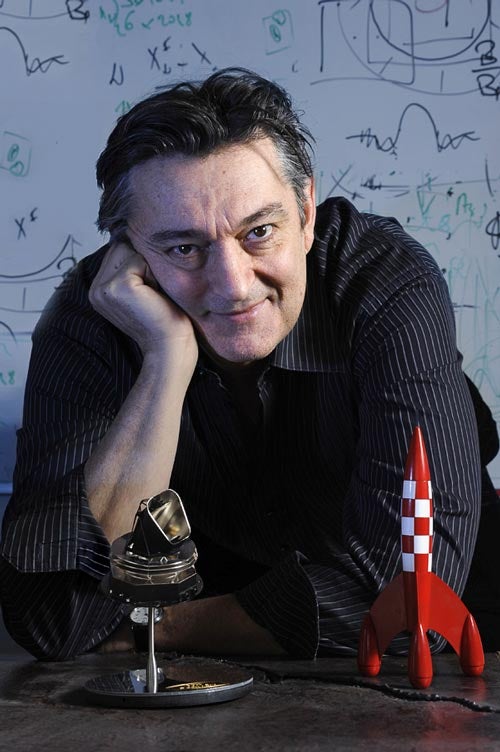|
March 6, 2015
Bunyan Lecture at Stanford: We are children of the vacuum, says astrophysicist
French astrophysicist François R. Bouchet will tell the story of the beginning of the universe – with a plot twist recently revealed by the Planck satellite mission – when he delivers Stanford's Bunyan Lecture March 11. By Leslie Willoughby

French astrophysicist François R. Bouchet delivers Stanford's 32nd Annual Bunyan Lecture, "Planck: Echoes from the Big Bang," on March 11. (Photo: Courtesy François R. Bouchet)
A cast of stars, planets, galaxies and clusters came into existence 13.82 billion years ago, in an extraordinary story to be told by François R. Bouchet, an astronomer at the Institut d'Astrophysique in Paris.
Bouchet delivers Stanford's 32nd Annual Bunyan Lecture, "Planck: Echoes from the Big Bang," on March 11. The presentation, free and open to the public, begins at 7:30 p.m. in the Braun Auditorium in the Mudd Chemistry Building at 333 Campus Drive.
Stanford's Astronomy Program hosts the lecture, named for James T. Bunyan, a member of the Hoover Institution, who endowed lectures that "inquire into man's changing vision of the cosmos and of human destiny as revealed in the latest discoveries in the fields of astronomy and space exploration."
"You have heard we are stardust, children from the stars, right?" Bouchet says. "That's only the first part of the story, because the stars had to come from somewhere."
Stars and humans came from very small quantum changes in the earliest vacuum of space, so we are more precisely children of quantum fluctuations of the vacuum, says Bouchet.
Cosmologists have proposed two explanations – inflation and cosmic strings – about the beginnings of the universe. The theories determine the starting point of "once upon a time."
For scientists, a theory means an explanation that best fits a collection of evidence and testable, replicable hypotheses. Inflation theory suggests that the universe began with a big bang, an exponential expansion. Cosmic string theory posited another origin for the growth of structure based on different properties of the vacuum. Now evidence from the Planck satellite mission has favored inflation theory in two completely separate ways: by measurements of temperature and polarization of light, says Bouchet.
To collect the data, the European Space Agency sent a satellite to orbit the sun. It carried sensitive instruments to study the so-called cosmic microwave background, a signature left over from the earliest times of the universe. "But there was a catch," says Bouchet. "These detectors have their wonderful sensitivity only if they are cooled to ridiculously low temperatures.
"We needed to build an extremely complex giant refrigerator, which would be stable for more than a year, and which would orbit 1.5 million kilometers [1 million miles] away from us, without any possibility to go and take a screwdriver and fix it."
The mission delivered on its basic promise. It collected data that allowed scientists to map temperature variations, essentially creating a history book of the universe. Scientists found "a very strong confirmation that something like inflation happened," Bouchet says. Further analysis of the data to look at the polarization of light offered additional evidence in support of inflation theory.
"We brought polarization to the point where if we don't even look at temperature, we can reconstitute the same story [of the early time of the universe], with the same parameters, with the singular accuracy – yet with a totally disjoined property – of light," says Bouchet. Scientists may propose new theories, yet "critics will have to explain now how this different probe is also telling the same story," he says.
Universal inflation
Inflation theory is based on the fact that throughout the universe, wherever you are, if you look sufficiently far away, all objects are receding from you, explains Bouchet. Scientists want to know how the rate of this expansion has been evolving with time.
Very early in the history of the universe there was a short period of amazingly fast expansion, according to inflation theory.
At that time the universe was very different. Its material had an unusual quality – the more that forces pulled on it, the faster the material would continue helping with expansion.
During the 1980s scientists realized that during the period of inflation, before light and matter came into being, that unusual quality contributed to the rise of the stars, planets, galaxies and clusters of our universe.
Leslie Willoughby is an intern at the Stanford News Service.
-30-
|